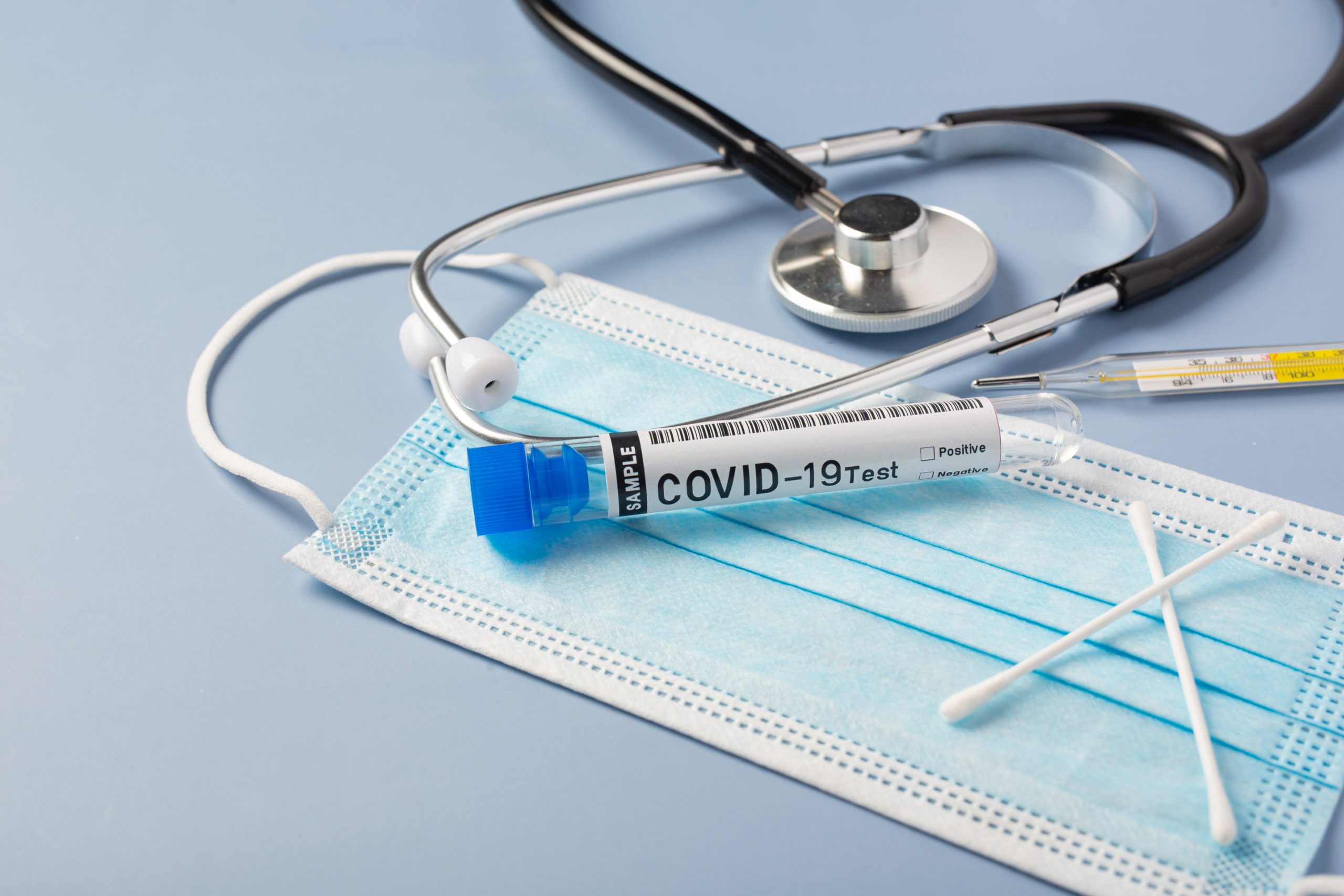

Washington University in St. Louis researchers have developed a breath test that swiftly identifies persons infected with the virus that causes COVID-19. The device simply requires one or two breathes and produces results in under a minute.
The study is published in the journal ACS Sensors. The same group of researchers recently released an article in the journal Nature Communications describing an air monitor they developed to identify airborne SARS-CoV-2 – the virus that causes COVID-19 — in hospitals, schools, and other public areas in roughly five minutes.
The latest research focuses on a breath test that might be used in doctors’ offices to promptly diagnose persons afflicted with the virus. If new strains of COVID-19 or other airborne infectious diseases emerge, similar devices might also be employed to check attendees at public gatherings. According to the researchers, the breath test has the potential to help avoid outbreaks in environments where many people live or interact in close quarters, such as aboard ships, nursing homes, college and university resident halls, or military sites.
“With this test, there are no nasal swabs and no waiting 15 minutes for results, as with home tests,” said co-corresponding author Rajan K. Chakrabarty, PhD, the Harold D. Jolley Career Development Associate Professor of Energy, Environment & Chemical Engineering at the McKelvey School of Engineering. “A person simply blows into a tube in the device, and an electrochemical biosensor detects whether the virus is there. Results are available in about a minute.”
The device’s biosensor was adapted from an Alzheimer’s disease-related technology created by experts at Washington University School of Medicine in St. Louis to detect amyloid beta and other Alzheimer’s disease-related proteins in mouse brains. John R. Cirrito, PhD, a professor of neurology, and Carla M. Yuede, PhD, an associate professor of psychiatry at the School of Medicine — both co-corresponding authors on the paper — employed a nanobody, an antibody derived from llamas, to detect the virus that causes COVID-19.
According to Chakrabarty and Cirrito, the breath test might be modified to detect additional viruses, such as influenza and respiratory syncytial virus (RSV). They also believe that after two weeks of collecting pathogen samples, they can design a biodetector for it.
“It’s a bit like a breathalyzer test that an impaired driver might be given,” Cirrito said. “And, for example, if people are in line to enter a hospital, a sports arena or the White House Situation Room, 15-minute nasal swab tests aren’t practical, and PCR tests take even longer. Plus, home tests are about 60% to 70% accurate, and they produce a lot of false negatives. This device will have diagnostic accuracy.”
After getting a funding from the National Institutes of Health (NIH), the researchers began working on the breath test equipment, which was created using 3D printers, in August 2020, during the first year of the pandemic. They’ve tested prototypes in the lab and at the Washington University Infectious Diseases Clinical Research Unit since receiving the grant. The team is still testing the device to increase its ability to detect the virus in humans.
The study involved testing COVID-positive patients who inhaled into the device two, four, or eight times. After two breaths from each person examined, the breath test yielded no false negatives and provided accurate results. The clinical trial is in underway to assess COVID-positive and -negative patients in order to further test and optimize the device.
The researchers also discovered that the breath test effectively recognized multiple different strains of SARS-CoV-2, including the original strain and the omicron variant, and their clinical studies in the St. Louis area are measuring active strains.
The researchers place a straw into the device to do the breath test. When a patient blows into the straw, aerosols from his or her breath accumulate on a biosensor inside the device. The device is then plugged into a small machine that detects signals from the biosensor and determines whether COVID-19 is positive or negative in less than a minute.
Clinical trials are still ongoing, and the researchers hope to use the device in clinics other than Washington University’s Infectious Diseases Clinical Research Unit in the near future. Furthermore, Y2X Life Sciences, based in New York, has an exclusive option to license the technology. That company has worked with the research team since the beginning of the project and throughout the device’s design stages to promote potential commercialization of the test.
more recommended stories
 Urine-Based microRNA Aging Clock Predicts Biological Age
Urine-Based microRNA Aging Clock Predicts Biological AgeKey Takeaways (Quick Summary) Researchers developed.
 Circadian Control of Neutrophils in Myocardial Infarction
Circadian Control of Neutrophils in Myocardial InfarctionKey Takeaways for HCPs Neutrophil activity.
 E-Cigarette Use and Heart Attack Risk in Former Smokers
E-Cigarette Use and Heart Attack Risk in Former SmokersKey Takeaways for Clinicians and Nurses.
 36-Week Pre-eclampsia Screening May Reduce Term Risk
36-Week Pre-eclampsia Screening May Reduce Term RiskA New Preventive Strategy for Term.
 Cardiovascular Risk and Sudden Cardiac Death in Diabetes
Cardiovascular Risk and Sudden Cardiac Death in DiabetesRising Sudden Cardiac Death (SCD) Risk.
 Poor Kidney Function and Alzheimer’s Biomarkers Explained
Poor Kidney Function and Alzheimer’s Biomarkers ExplainedPoor kidney function may influence levels.
 Walking Speed Before Hip Replacement Predicts Recovery
Walking Speed Before Hip Replacement Predicts RecoveryNew Evidence Points to a Simple,.
 Neuroblastoma Drug Combo Extends Survival in Models
Neuroblastoma Drug Combo Extends Survival in ModelsA Promising Shift in High-Risk Neuroblastoma.
 How Soybean Oil Impacts Weight Gain and Metabolism
How Soybean Oil Impacts Weight Gain and MetabolismWhy Soybean Oil May Affect Metabolism.
 Coffee and Cognitive Function: Evidence Review
Coffee and Cognitive Function: Evidence ReviewA new narrative review in Cureus.

Leave a Comment